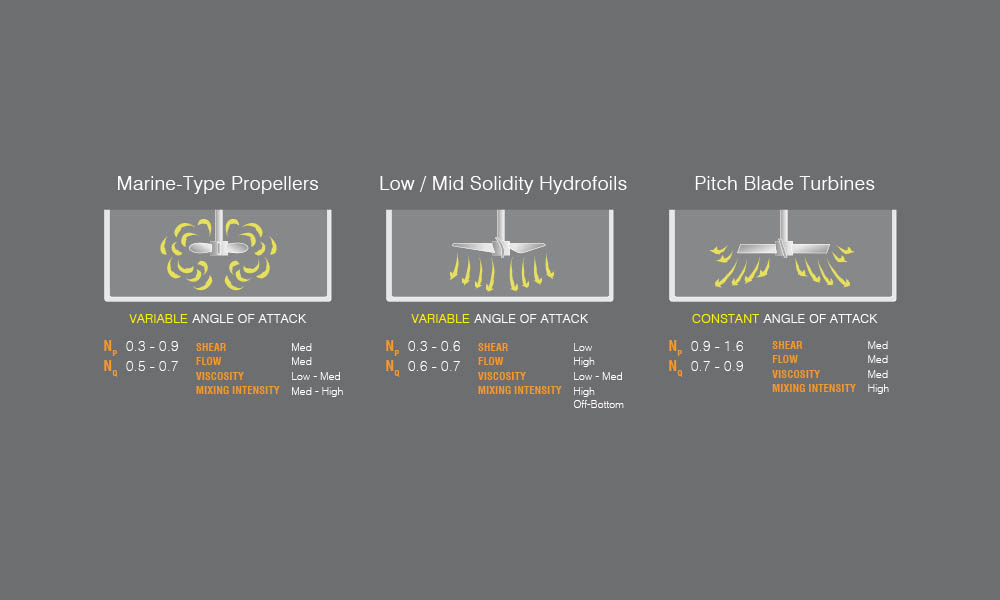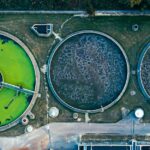Mixing 101: Flow Patterns & Impellers
Mixing Flow Patterns & Impeller Types
In our article on 4 Impeller Types and Their Applications, we provided an overview on the most common types of impellers used in industrial mixing. Now we’ll go into more detail about each impeller type and their influences on the mixing process.
Our focus on impellers is due to the fact that they are the part of the mixer that does the actual mixing: as they rotate they create fluid flow. These flow patterns are the primary considerations when designing a mixer because creating the right flow pattern is critical to achieving the desired result.
The most common flow patterns in mixing are axial (down and up) and radial (side to side) flow. These flow patterns also describe the generic classes of impellers: axial and radial.
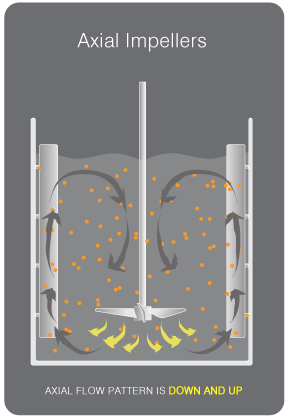 |
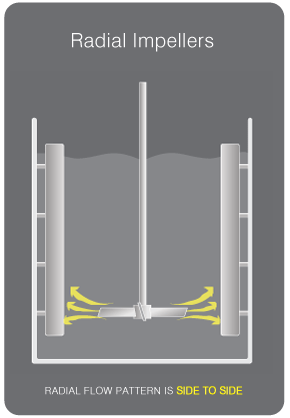 |
1. Axial Flow Impellers
Axial (down and up) pumping is an important flow pattern because it addresses two of the most common challenges in mixing; solid suspension and stratification. In this process both the superficial and annular velocities can be calculated to determine and control the level of mixing. (If your axial impeller is causing swirling or vortexing, check out our previous Mixing 101 posting Baffled by Baffles?)
Here are some of the most common axial impellers:
A. Marine-type PropellersViscosity: 0 – 5,000 cps Commonly used on marine boats, the propellers are often used in small portable direct drive mixer applications because they’re economical and efficient. However, in larger applications they’re seldom used because of their price and weight. |
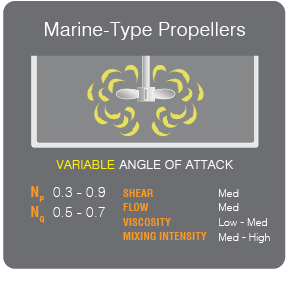 |
B. PitchViscosity: 0 – 50,000 cps The pitch blade impeller is the most versatile impeller and was the standard until the development of the airfoil. They’re useful in blending two or more liquids and are effective in low bottom clearance with less liquid submergence. |
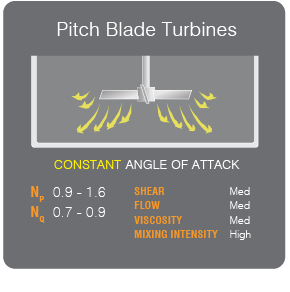 |
C. DynaflowTM (Hydrofoils)Viscosity: 0 – 3,000 cps The camber of the blade increases the efficiency of the impeller, reducing its power / pumping ratio. A more technical benefit is the laminar flow created by the camber of this impeller. This camber reduces turbulence (shear) substantially. That is why it is selected for shear-sensitive applications as well. |
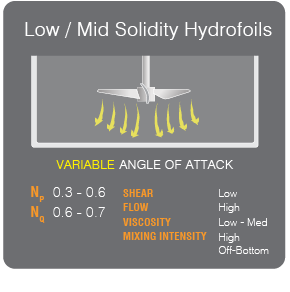 |
2. Radial Flow Impellers
| Unlike axial impellers, radial impellers are commonly selected for low level mixing (known as a tickler blade) or elongated tanks. They typically give high shear rates because of their angle of attack. They also have a relatively low pumping number, making them the most sensitive to viscosity. Radial impellers do not have a high tank turnover flow like axial flow impellers. | 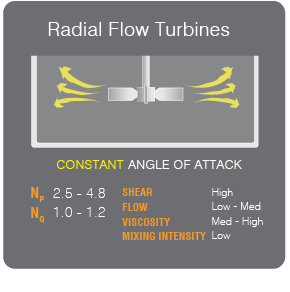 |
Impeller Selection
As you can see, the first step to meeting your mixing objective is to identify your desired flow pattern, which is dictated by the impeller. Next, you must consider the 4 main factors for configuring your mixer. From there, you must address the mechanical requirements of your mixing process: pumping or flow. The mechanical requirements to produce flow or torque per unit volume, the most important relationship in mixing, are explained next.
Mixing Terms Glossary
Shear Stress
- Parallel-acting force where 2 layers inside the fluid slide against each other. This is in contrast to compression (perpendicular-acting force), tension (stretching force), and torsion (twisting force).
Viscosity
- Internal fluid resistance thought of as the “thickness” or “resistance to flow” of the liquid (i.e. water has viscosity of 1 centipoise vs hand cleaner, which is around 3,000 centipoise).
Power Number (NP)
- Constant used to calculate power draw, unique to each type of mixing impeller.
Pumping Number (NQ)
- Constant used to calculate flow or pumping rate, derived empirically for each unique shape of impeller.
Superficial Velocity
- Velocity of the fluid being pumped downward by the impeller.
Annular Velocity
- Rate at which the liquid is traveling upwards inside a tank past the impeller.
Solid Suspension
- State of a solid when its particles are mixed with, but don’t dissolve in the fluid and are capable of separation (i.e. sand in water).
Stratification
- Separation of 2 immiscible liquids due to density variation. Such circumstances occur naturally: for example, due to variations in temperature in the atmosphere or temperature and salinity variations in the ocean.
Contact Dynamix Agitators For Mixer Info & Quotes
Request a free quote for any of our mixers and agitators or call 604-670-6964 for all other inquiries.

